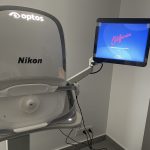Scleral Buckling Surgery for Retinal Detachment
Retinal detachment is an alarming condition that necessitates immediate intervention to safeguard vision. Simply put, in retinal detachment, the thin layer of tissue at the back of the eye pulls away from its supportive tissue. It’s like wallpaper peeling off from a wall. If left untreated, this condition can result in severe vision loss or even total blindness in the affected eye.
One of the treatments for this condition is the scleral buckle procedure. This article aims to shed light on what the scleral buckle procedure entails, when it is advised, the risks associated with it, and the expectations for recovery post-surgery. The objective is to provide easily digestible information to facilitate well-informed decisions regarding eye health.
Indications for Scleral Buckle Surgery
When faced with retinal detachment, time is of the essence. The longer the retina remains detached, the greater the risk of irreversible vision loss. Scleral buckle surgery is generally indicated under the following conditions:
1. Significant Detachment
If a large part of the retina is detached and poses an imminent risk to vision.
2. Failed Previous Treatment
In cases where other less invasive treatments like laser therapy or pneumatic retinopexy have failed to resolve the detachment.
3. Presence of Symptoms
Noticeable symptoms like a sudden flurry of floaters, bright flashes, or a dark curtain over the field of vision often suggest the necessity for surgical intervention.
4. Detachment Complexity
The complexity and location of the detachment may necessitate the use of scleral buckle over other treatments.
What is Scleral Buckle Surgery?
In simple terms, scleral buckle surgery involves attaching a flexible band (the ‘buckle’) around the white of the eye, called the sclera. This band pushes the sclera toward the detached retina, allowing the retina to settle back into its proper position. Sometimes, a freezing probe is also used to secure the retina to the eye wall. The buckle remains in place permanently to prevent future detachments.
Risks of Scleral Buckle Surgery
No surgical procedure is devoid of risks, and scleral buckle surgery is no exception. Some of the risks you should be aware of are:
1. Infection
Although uncommon, there’s a possibility of infection post-surgery which might require additional treatment.
2. Glaucoma
Increased pressure within the eye, known as glaucoma, can develop as a result of the surgery.
3. Double Vision
Some patients may experience temporary or even permanent double vision.
4. Refractive Changes
The surgery may induce changes in the eye’s natural focus, necessitating the use of new eyeglasses.
5. Redetachment
Though rare, there’s a risk that the retina may detach again, requiring further surgical intervention.
6. Ocular Pain
Some patients experience mild to moderate discomfort or pain after the surgery.
It is crucial to discuss all possible risks and complications with your eye specialist to make an informed decision.
Post-Operative Outcomes
1. Vision Restoration
Many patients experience a substantial improvement in vision post-surgery, although complete restoration cannot always be guaranteed.
2. Recovery Time
Patients can expect a recovery period ranging from a few weeks to a couple of months, during which certain activities might be restricted.
3. Follow-up Appointments
Regular follow-up appointments are crucial to monitor healing and to detect any potential complications at the earliest.
4. Lifestyle Modifications
Temporary lifestyle modifications, like avoiding strenuous activities and sleeping in a specific position, may be advised.
Conclusion
Retinal detachment is a serious condition that demands immediate action. Scleral buckle surgery stands as a time-tested method for treating significant and complex cases of retinal detachment. However, it is imperative to weigh the potential benefits against the possible risks and discuss in-depth with your eye specialist.
By having a well-rounded understanding of what the procedure entails, the conditions it is designed to treat, its associated risks, and what to expect post-operatively, you can make a well-informed decision to proceed with the treatment or consider alternative options. Regular follow-ups and adhering to post-operative care guidelines are the keys to a successful recovery.
It is always recommended to consult with your healthcare provider for a comprehensive understanding of your specific condition and tailored treatment options.
Remember, preserving your vision is not just a matter of good fortune; it’s a result of taking timely, informed actions.



